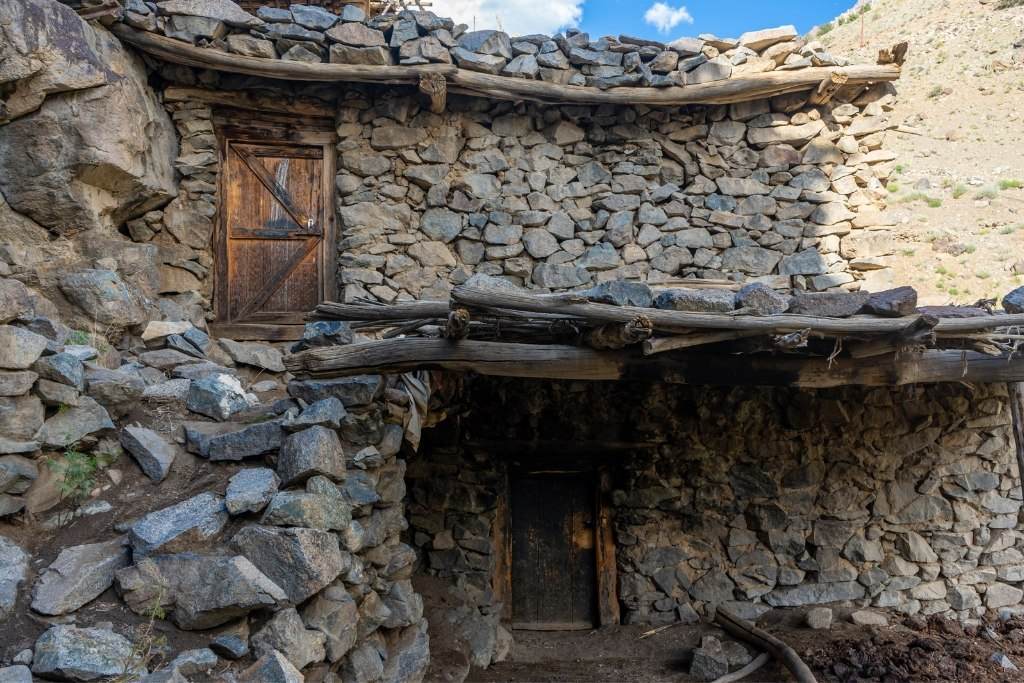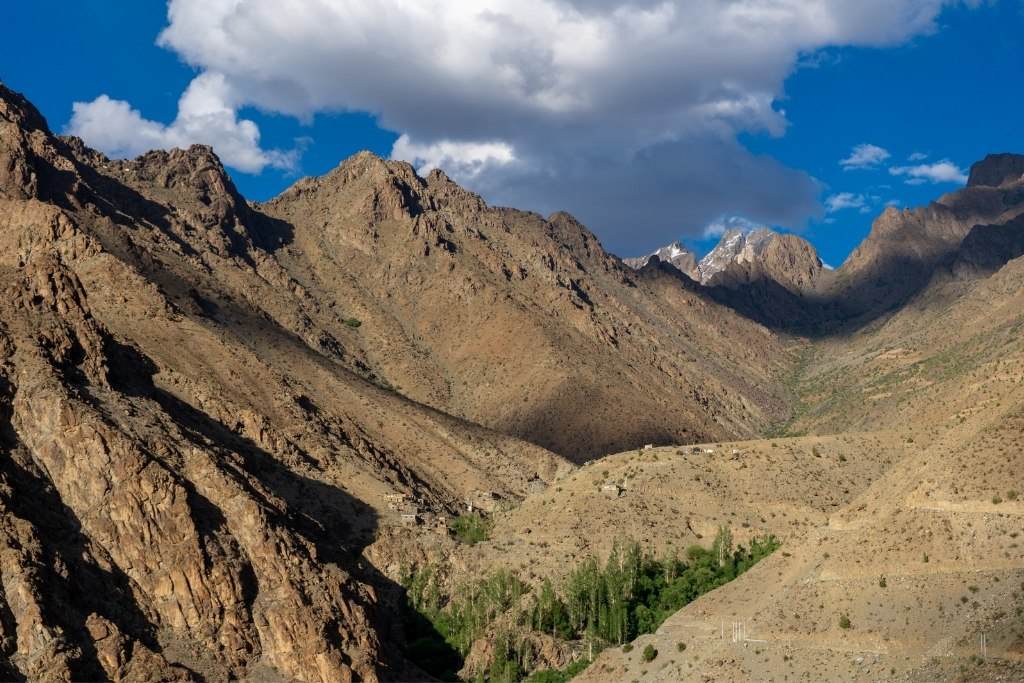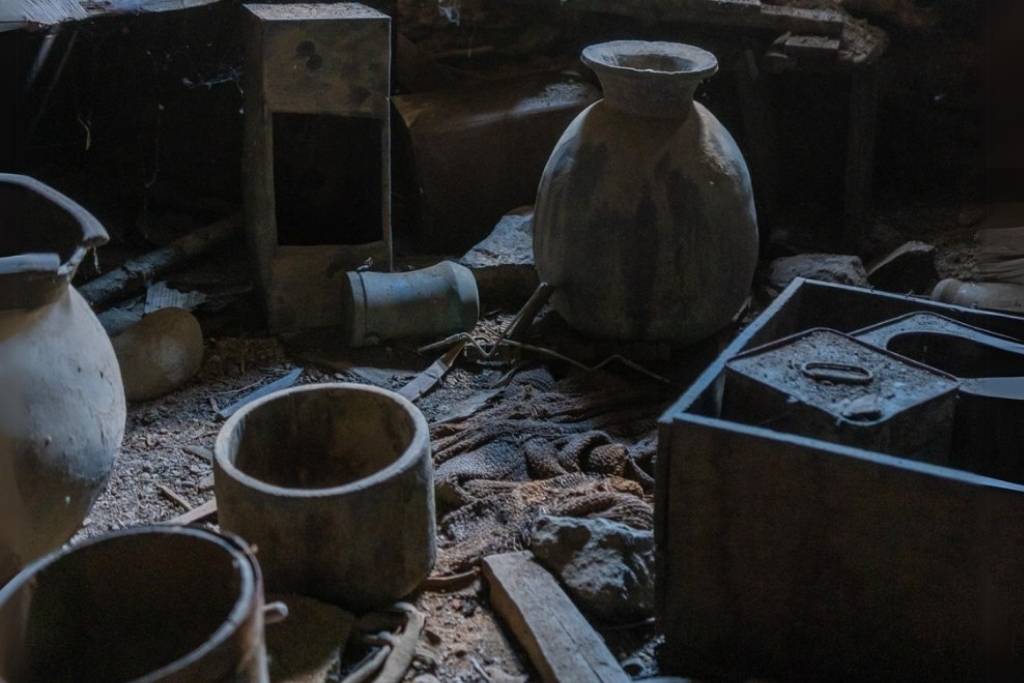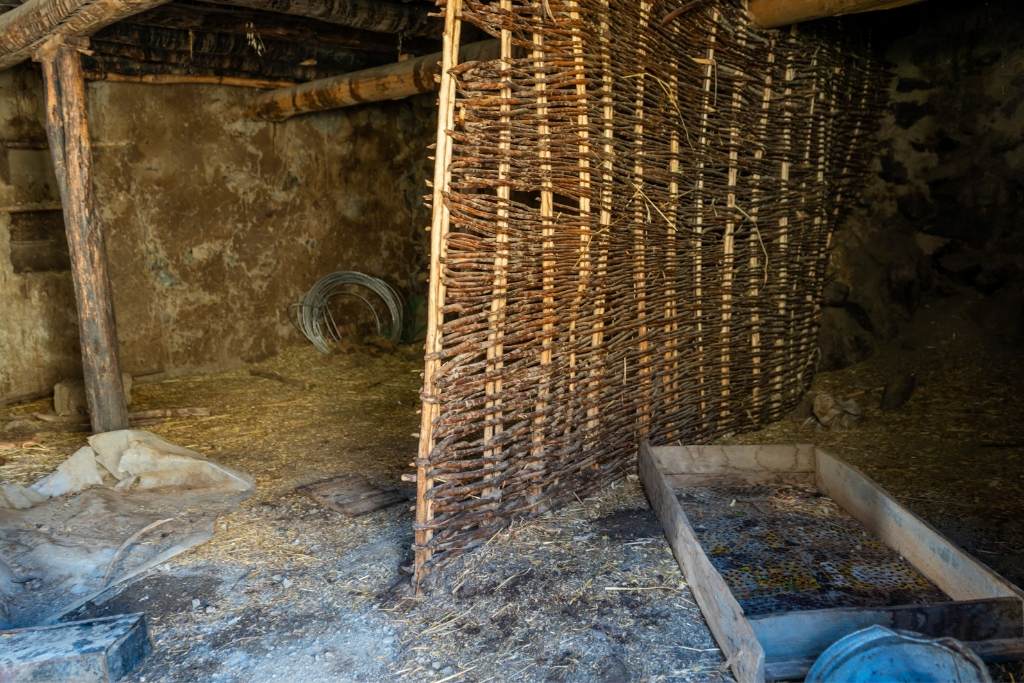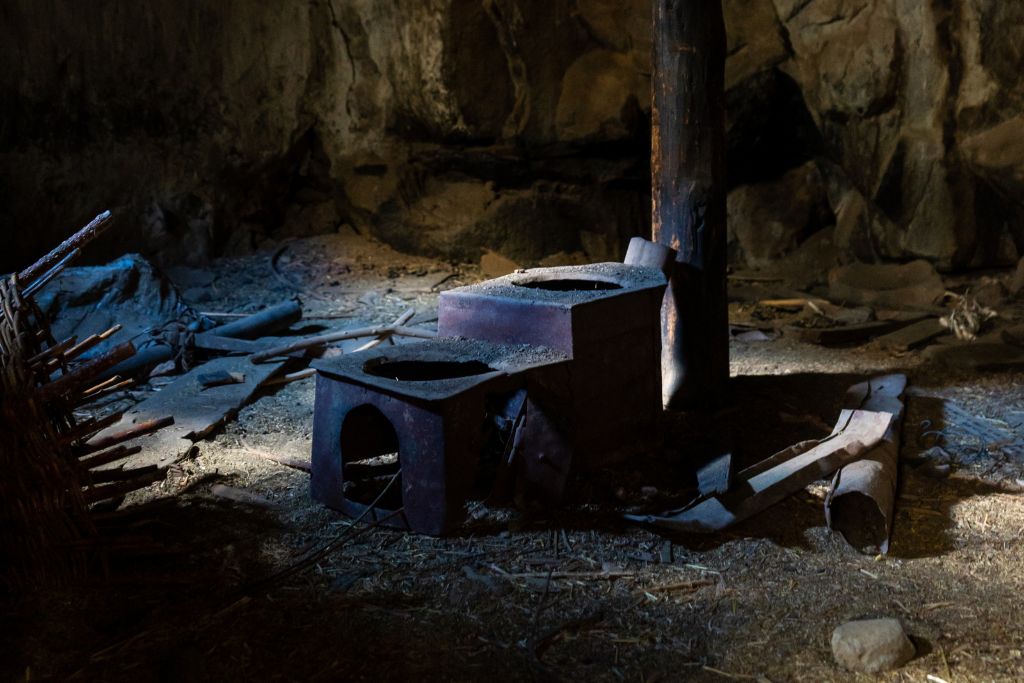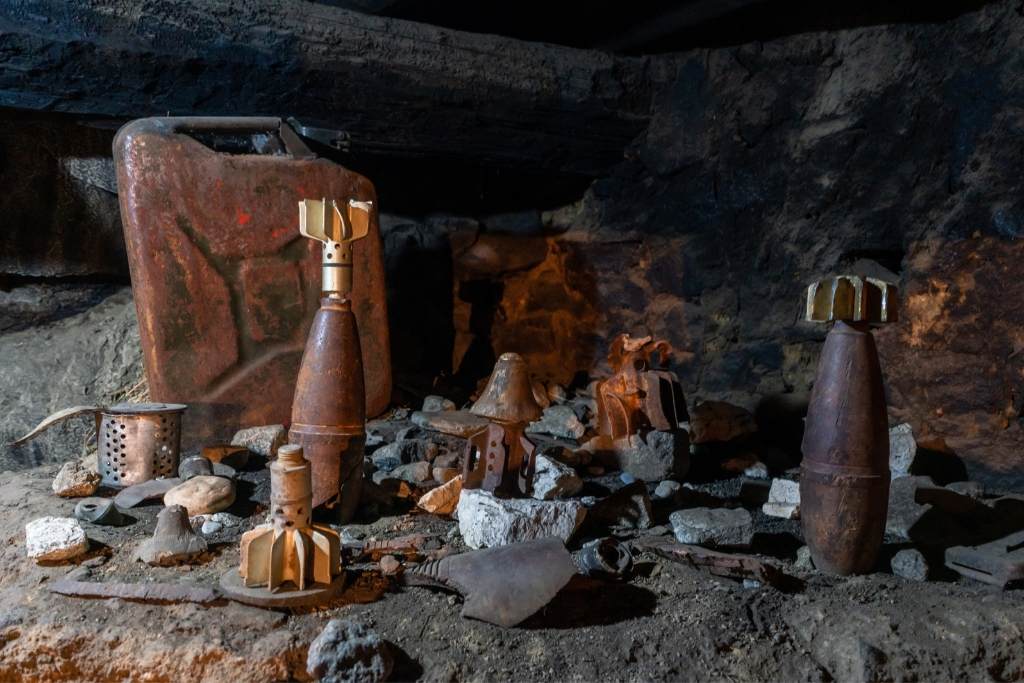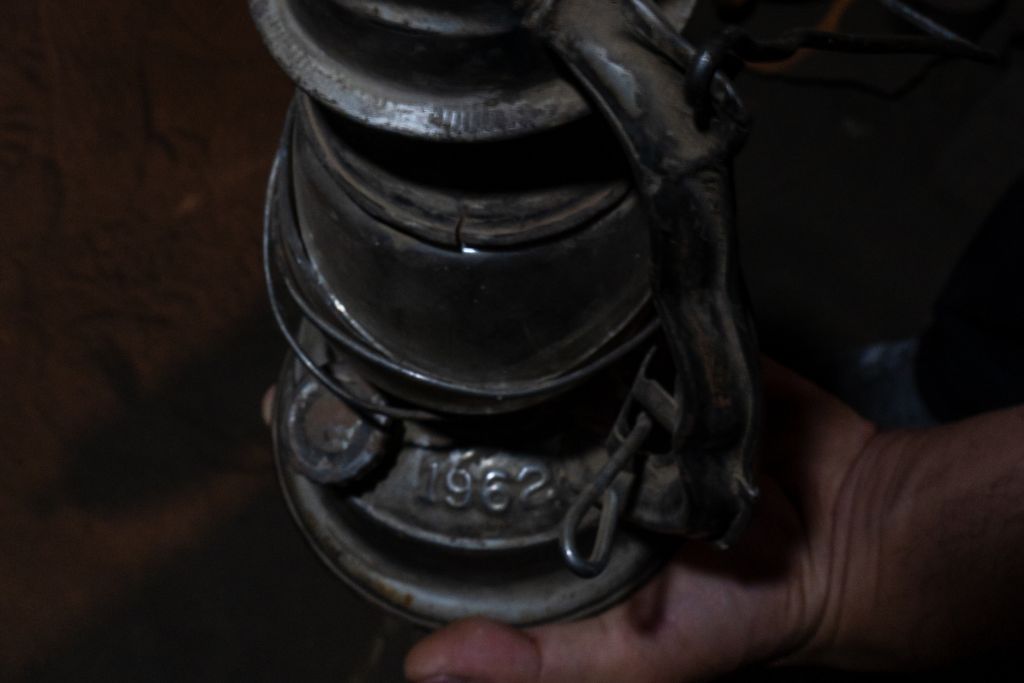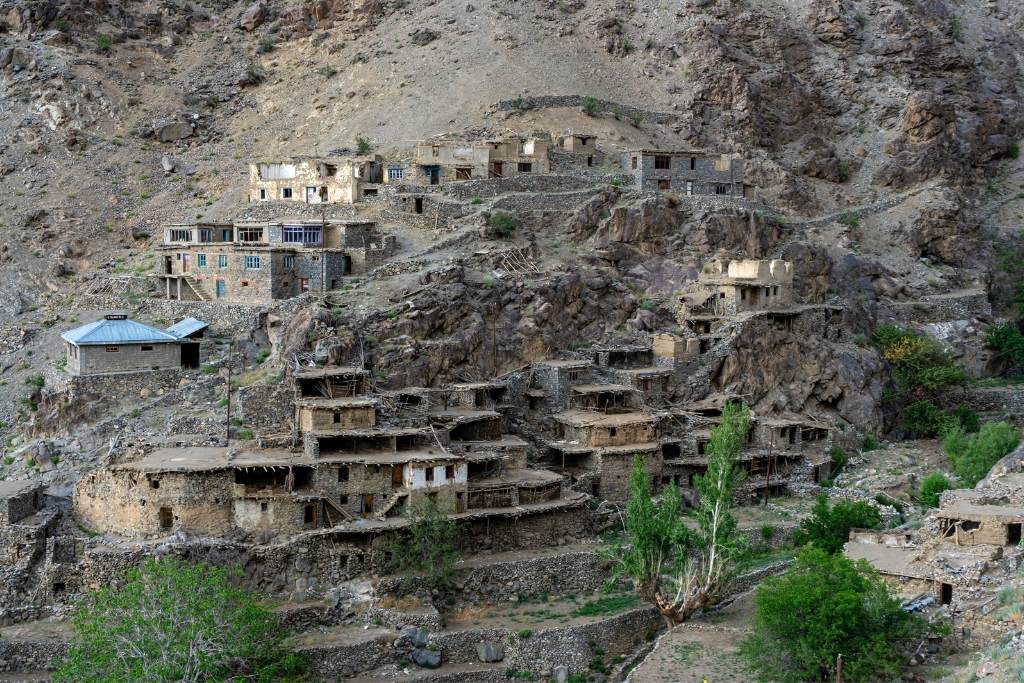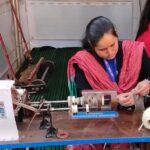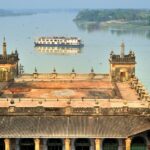A typical two-storeyed house in Hunderman, built in the traditional architectural method using stones, has been abandoned for decades. Hunderman village in Kargil district of Ladakh is about 10 kms uphill from Kargil town. The village was under Pakistan’s control after the Indo-Pakistan war in 1947, but India regained control of Hunderman after the 1971 war.
Seen from a distance, even today one can see army bunkers camouflaged in the peaks towering over Hunderman. It became Kargil’s ghost village when residents fled for their lives because of the war.
On the way, travellers come across this sign board warning them to remain on the road as there are still landmines left behind by the Pakistani army when they retreated in 1971.
Everyday utilitarian items left behind by villagers when they fled the village can still be seen in Hunderman’s abandoned houses.
Also Read: Dwindling snowfall leading to water crisis in Ladakh
A typical house had two floors, with the first floor serving as the living quarters.
Also Read: Coastal erosion turns Podampetta into Odisha’s ghost village
Villagers generally kept livestock on the ground floor of these two-storeyed houses.
Also Read: The life of a nomadic boy in Ladakh
Household items left behind by villagers when they abandoned the village can still be seen in many of the houses.
Also Read: Phuktal Gompa – Feeling on top of the world at this Ladakh monastery
Kargil’s ghost village has a museum that displays household items left behind by the villagers and remnants of weaponry from the war.
One of the displays in the museum is a letter that one Hussain Khan living in Brolmo village in Pakistan wrote to his sister Hamshira in Hunderman in 1985. The siblings were separated during the 1971 Indo-Pakistan war.
Also Read: Melting point! Ice hockey rinks need cooling fans in Ladakh
The museum in Hunderman – known as the Museum of Memories – has on display a kerosene lantern left behind by a Pakistani soldier.
Also Read: A visual journey through the saffron town of Kashmir
Houses, seen as specks in the distance, lie in the Pakistan-occupied Kashmir (POK). There is a popular story amongst the local people that during the displacement, some family members reached POK while the rest were left behind in India. Today, members of the same family carry water and ration for the army on each side of the border and that is the only way they can see each other, standing across the border.
Also Read: Got apricots? Make Kargil’s xsamik chutney
Hunderman remained abandoned for many years after the war. However, a few residents’ descendants have returned. It appears that Hunderman may soon lose its Kargil’s ghost village tag as the top left corner of the photo shows houses that the returned people are building.
Also Read: India’s most haunted villages
The lead image on top shows Hunderman, Kargil’s ghost village that people abandoned because of the Indo-Pakistan war.
Reporting and photography by Atiqur Rahman, a Delhi-based photographer who hails from Nagaland. He is passionate about bringing stories from the Himalayan region.

